Fish farming, also known as aquaculture, is the practice of rearing fish in controlled environments such as ponds, tanks, or cages. It involves the cultivation and harvesting of various species of fish for commercial purposes.
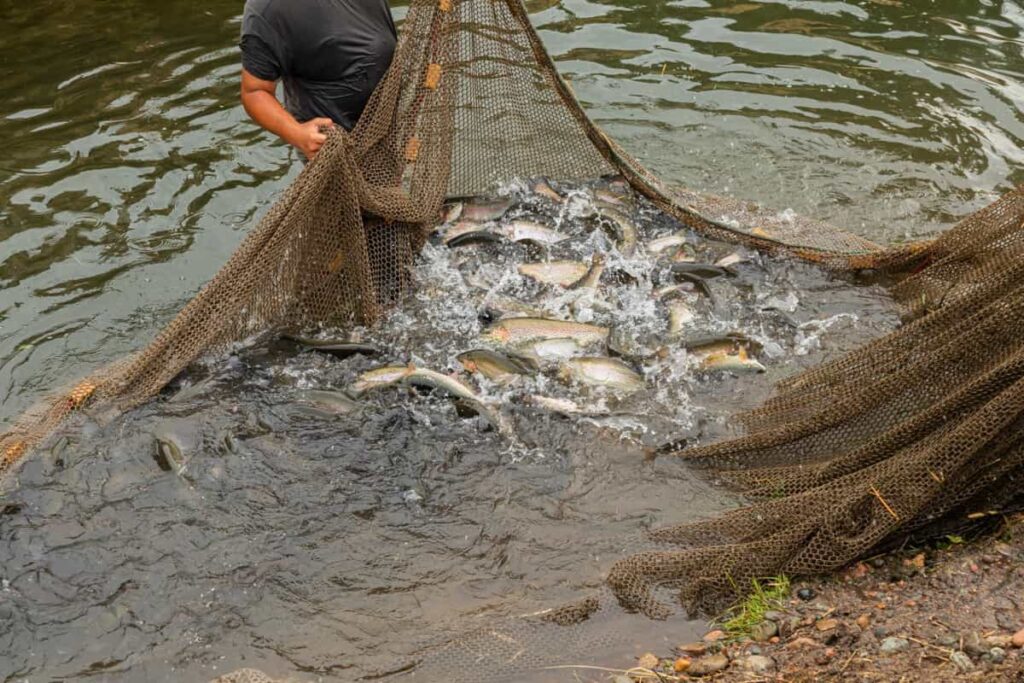
Types of Fish Farmed in Thailand
Thailand boasts diverse freshwater fish species cultivated through fish farming practices. With more than 50 varieties being cultured, it’s safe to say that Thailand is a hub for fish production. Among these species, three are the most important in production volume. Catfish takes the lead, accounting for approximately 30% of Thailand’s total fish farming output.
The next fish species is Nile tilapia, which comprises around 29% of the country’s fish farming production. This hardy and fast-growing species has gained immense popularity due to its ability to adapt well to different environments and feed efficiently. Silver barb contributes about 15% to Thailand’s overall fish farming yield.
This species is highly valued for its delicate taste and nutritional benefits, making it sought after by local consumers as well as international markets. With over 50 freshwater fish types cultivated in Thailand’s thriving aquaculture sector, catfish, Nile tilapia, and silver barb are key contributors. Their distinct qualities make them ideal choices for farmers seeking profitability and sustainability in this ever-evolving field.
In case you missed it: Pig Farming in Thailand: Breeds, License, and Permissions to Start
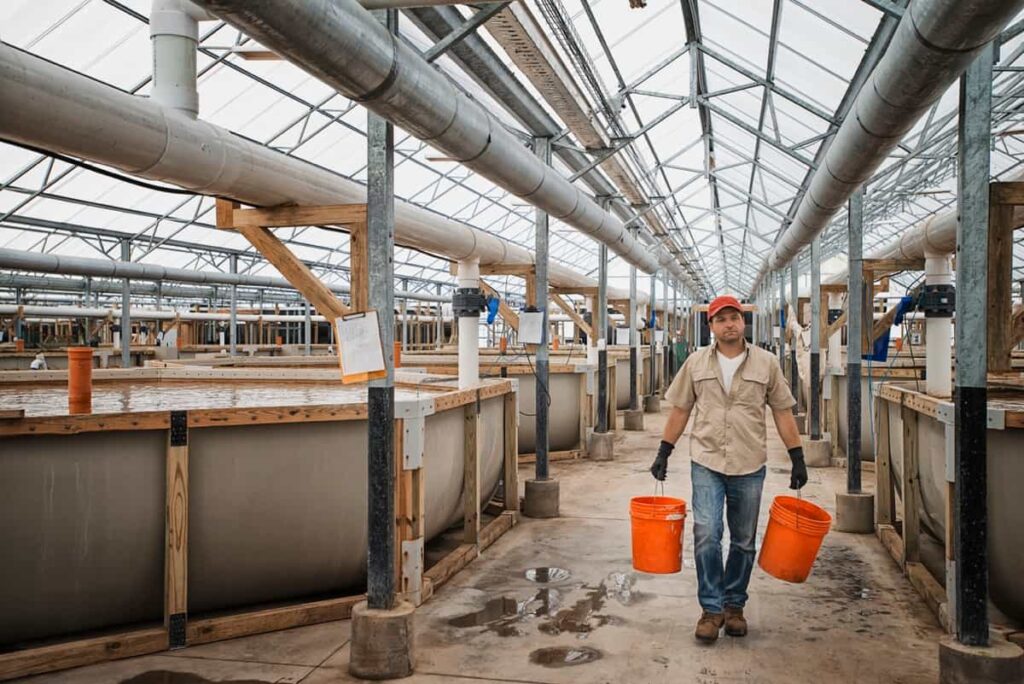
Advantages of Fish Farming in Thailand
The fish farming business plays an important role in the economy of Thailand. The importance of fish farming in Thailand can be attributed to several factors. It helps meet the increasing demand for seafood both domestically and internationally. As global fish stocks continue to decline due to overfishing and environmental degradation, aquaculture provides a sustainable solution to ensure a steady supply of fish. Additionally, fish farming creates employment opportunities for rural communities in Thailand.
Fish farming provides a sustainable and cost-effective solution to meet the country’s growing demand for fish consumption. Farmers have a wide range of options, with over 50 freshwater fish species being cultured. Fish farming also offers economic benefits by generating employment opportunities and promoting local businesses. Furthermore, fish farming promotes food security by reducing dependence on wild-caught seafood imports. It allows for better control over production processes and ensures consumers can access safe, high-quality seafood products.
Sustainable Practices in Thai Fish Farming
Fish farming in Thailand has been evolving to incorporate more sustainable practices, ensuring the industry’s long-term viability. One sustainable practice is the use of recirculating aquaculture systems (RAS). These closed-loop systems minimize water usage and reduce environmental impact by continuously filtering and reusing water. Thai fish farmers also prioritize responsible feed management.
They strive to use locally sourced ingredients for fish feed production, reducing dependence on imported feeds that may have a higher environmental footprint. Efforts are also being made to develop sustainable alternative protein sources for fish feed. To further enhance sustainability, many farmers are implementing best management practices (BMPs), which include regular monitoring of water quality parameters, disease prevention measures, and efficient energy usage.
These sustainable practices demonstrate Thailand’s commitment to balancing economic growth with environmental stewardship in its thriving fish farming industry. By prioritizing sustainability, Thai fish farmers can ensure a bright future for their businesses while preserving natural resources for generations.
Fish Farming Techniques Used in Thailand
Different techniques are employed depending on the type of farming system used. Pond culture is one popular method for raising fish in large earthen ponds using natural or supplementary feed sources. One commonly used technique is pond culture, where fish are raised in large earthen ponds. These ponds are carefully managed to maintain water quality and provide optimal conditions for the fish. Another technique is cage culture, which involves raising fish in floating cages placed in natural bodies of water such as lakes or reservoirs.
In case you missed it: How to Start Dragon Fruit Farming/Pitaya in Thailand: A Step-by-Step Guide for Beginners
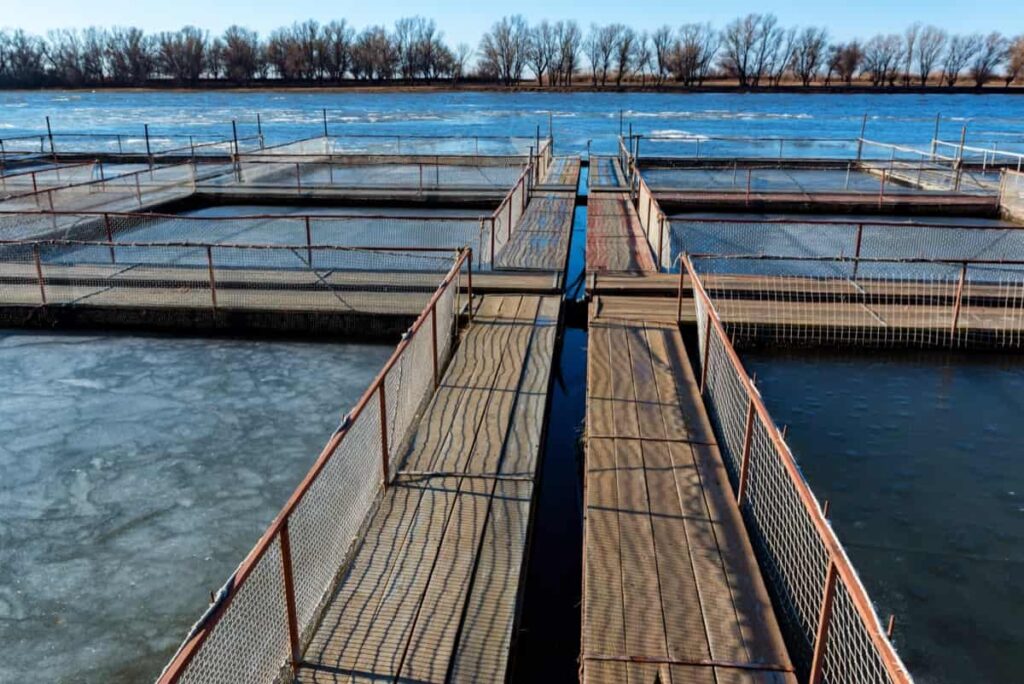
This method allows for easy monitoring and feeding of the fish while utilizing existing resources. In recent years, there has been an increased adoption of recirculating aquaculture systems (RAS) in Thailand. RAS involves reusing and treating water within a closed system, minimizing environmental impact, and optimizing resource utilization. This technology enables farmers to control temperature, oxygen levels, and waste management more effectively.
Fish Feed Production in Thailand
With the growing demand for fish products, it is essential for an adequate supply of high-quality fish feed. In Thailand, both commercial and homemade fish feeds are used in aquaculture. Commercial fish feeds are widely available and formulated to meet the nutritional requirements of different species. They come in various forms, such as pellets, flakes, or powders. In recent years, there has been a shift towards more sustainable feed options in Thai fish farming.
This includes using locally sourced ingredients and reducing reliance on imported raw materials. Homemade fish feeds are also popular among small-scale farmers who prefer to use their formulations. These feeds typically include locally available ingredients like rice bran, vegetables, and kitchen waste. To ensure quality control in the industry, the Thai government regulates the production and distribution of commercial fish feeds through licensing requirements and periodic inspections.
Water Management in Thai Fish Farms
With the increasing demand for fish and limited freshwater resources, managing water usage in fish farms effectively is essential. Thai fish farmers employ various techniques to optimize water usage and maintain high-quality water conditions for their aquatic livestock. One common method is recirculating aquaculture systems (RAS), which involve filtering and treating the water before reusing it on the farm. This not only reduces water consumption but also minimizes environmental impact.
Another approach to efficient water management is through proper pond design and construction. Thai fish farmers often build ponds with features such as inlet and outlet structures, which help regulate water flow into and out of the pond. Additionally, they use aerators or paddlewheels to enhance oxygen levels in the ponds, ensuring a healthy environment for the fish.
Monitoring water quality parameters like temperature, dissolved oxygen levels, pH balance, and ammonia concentration is crucial in maintaining optimal conditions for fish growth. Fish farmers conduct regular testing using specialized equipment to ensure these parameters are within acceptable ranges. Effective water management is vital to successful fish farming operations in Thailand. By implementing sustainable practices and innovative technologies, Thai fish farmers can ensure the efficient use of freshwater resources while maximizing their yields.
In case you missed it: Tilapia Fish Farming in South Africa: Business Plan, Cost and Profit Analysis
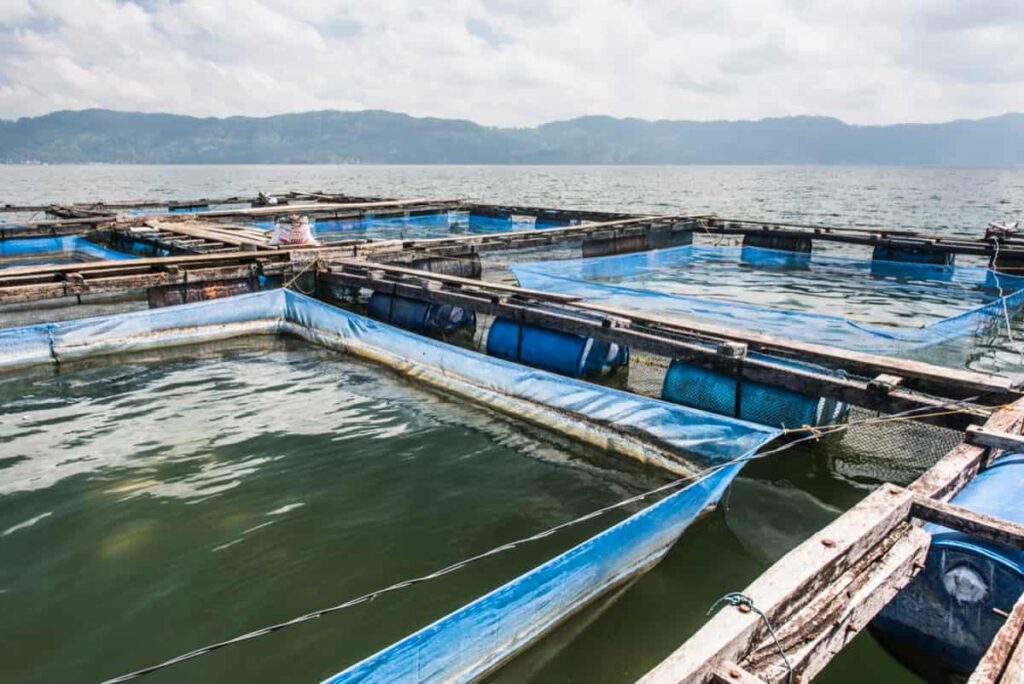
License and Permissions Required for Fish Farming in Thailand
Fish farming in Thailand is a regulated industry that requires certain licenses and permissions to operate legally. These regulations aim to ensure the sustainable management of fish farms and protect the environment. To start a fish farming business in Thailand, you must obtain a license from the Department of Fisheries.
The application process involves submitting detailed information about your proposed fish farm, including its location, size, and species you plan to cultivate. You may also need to secure other permits depending on your specific circumstances. For example, if your fish farm is located near protected areas or water sources such as rivers or lakes, you may need additional approvals from relevant authorities.
It’s important to note that obtaining these licenses and permits can be a time-consuming process. You must demonstrate compliance with environmental regulations and have systems in place for waste management and disease prevention. By following the necessary procedures and obtaining the required licenses and permissions, fish farmers can operate legally and contribute towards sustainable aquaculture practices in Thailand.
Government Support for the Fish Farming Industry
The fish farming industry in Thailand has received significant support from the government, recognizing its importance for economic growth and food security. The Thai government has implemented various policies and programs to promote and develop the sector. One of the main government support is the establishment of the Department of Fisheries (DOF), which oversees all aspects of fish farming in Thailand.
The DOF provides fish farmers with technical assistance, training programs, and financial support. They also work closely with research institutions to develop new technologies and practices that enhance productivity and sustainability. In addition, the government offers subsidies and incentives to encourage investment in fish farming.
This includes low-interest loans, tax exemptions, and grants for infrastructure development such as pond construction or hatchery facilities. Furthermore, the Thai government collaborates internationally on aquaculture research and development projects. This allows them to exchange knowledge with other countries while staying updated on global trends in sustainable aquaculture practices.
Training and Education Programs for Fish Farmers
One training program is the Fish Farming Training Center, which offers comprehensive courses on various aspects of fish farming. Farmers can learn about breeding techniques, disease management, water quality monitoring, feed formulation, and marketing strategies. The center also provides hands-on training to give farmers practical experience. In addition to formal training centers, there are workshops and seminars organized by government agencies and industry associations.
These events bring together experts who share their insights on new technologies and best practices in fish farming. Furthermore, collaboration between research institutions and universities allows for valuable research findings to be translated into practical knowledge for farmers.
By participating in these training programs, fish farmers can enhance their expertise, adopt sustainable practices, minimize risks associated with diseases or environmental factors, optimize production efficiency, and ultimately increase profitability. Investing in training and education programs is essential for fish farmers as it helps them stay competitive in an ever-evolving industry while contributing towards the overall growth of the aquaculture sector in Thailand.
Market Opportunities for Thai Fish Farmers
Thai fish farmers have a wide range of market opportunities to explore domestically and internationally. The demand for seafood products in Thailand is consistently high, making it a lucrative market for fish farmers. Thailand’s strategic location and well-developed infrastructure allow easy access to export markets. One major market opportunity lies in the increasing demand for sustainable and organic seafood products. This presents an excellent opportunity for Thai fish farmers practicing sustainable farming to tap into this growing niche market.
In case you missed it: Fish Pond Size Calculator: Ideal Pond Size for 1000, 5000, and 10,000 Fish
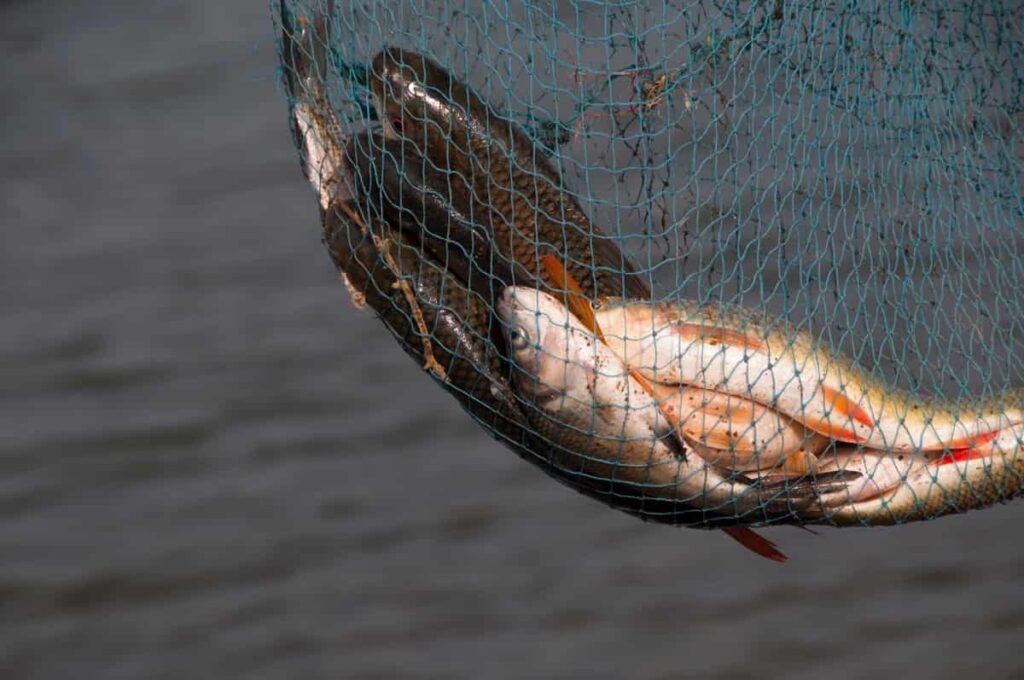
Another potential opportunity is the rising popularity of value-added seafood products such as fillets, smoked fish, and ready-to-eat meals. These processed products fetch higher prices in the market than live or fresh fish alone. By investing in processing facilities or partnering with established processors, Thai fish farmers can capture a larger share of the value chain. Furthermore, there is also great potential in catering to the tourism industry within Thailand.
With millions of tourists visiting yearly, there is a constant demand for fresh seafood in hotels, resorts, restaurants, and street stalls across various tourist destinations. Establishing partnerships with local hospitality businesses can provide steady income streams for Thai fish farmers. On an international level, Thai seafood exports continue to thrive due to strong global demand. Countries such as Japan, China, the United States, and European nations are significant importers of Thai seafood products.
Future Prospects for Fish Farming in Thailand
With the increasing demand for seafood globally, Thai fish farmers have a unique opportunity to expand their operations and meet this growing market need. The country’s favorable climate, abundant water resources, and extensive aquaculture knowledge make it an ideal location for fish farming. The Thai government has implemented several initiatives to encourage sustainable practices, improve fish feed production, enhance water management techniques, and provide training and education programs for fish farmers.
Furthermore, advancements in technology are revolutionizing the way fish farming is conducted. Innovations such as recirculating aquaculture systems (RAS) allow farmers to control water quality parameters while minimizing environmental impact efficiently. In addition to domestic consumption, Thai fish farmers have access to international markets through export opportunities. Countries worldwide increasingly seek high-quality seafood products from sustainable sources, presenting a significant market potential for Thai producers.
Challenges Faced by Fish Farmers in Thailand
One of the major challenges fish farmers face in Thailand is water quality management. Ensuring that the water in which the fish are raised is clean and free from pollutants requires constant monitoring and maintenance. Another challenge is disease management. Like humans, fish can also fall ill and suffer from various diseases.
Fish farmers must be vigilant and take preventive measures such as maintaining proper hygiene and providing nutritious feed to minimize the risk of spreading diseases among their stock. Climate change also poses a significant challenge for fish farmers in Thailand. Rising temperatures and unpredictable weather patterns can affect the farms’ water temperature, oxygen levels, and productivity.
Adaptation strategies such as implementing shade structures or investing in climate-controlled systems may be necessary to mitigate these effects. Government initiatives to support small-scale farmers through loans or grants play a crucial role in overcoming this hurdle. Despite these challenges, many Thai fish farmers thrive through innovation, sustainable practices, and government support.
Factors Affecting Fish Farming Business Cost and Profitability in Thailand
To begin with, you’ll need suitable land or access to water bodies to set up your fish farm. This could involve purchasing or leasing property, which can vary greatly in cost depending on location and size. Next, you’ll need to invest in infrastructure such as ponds or tanks for raising the fish. The cost of constructing these structures will depend on their size and the materials used. You may also need to invest in filtration systems and aerators to maintain water quality.
With proper planning and management, fish farmers can expect significant returns on their investment. The demand for freshwater fish is growing domestically and internationally, providing ample market opportunities. Moreover, the cost of production in Thai fish farms is relatively low compared to other countries. This translates into higher profit margins for farmers.
In case you missed it: How to Convert a Swimming Pool Into Koi Fish Pond: Ideas, Tips, and Techniques
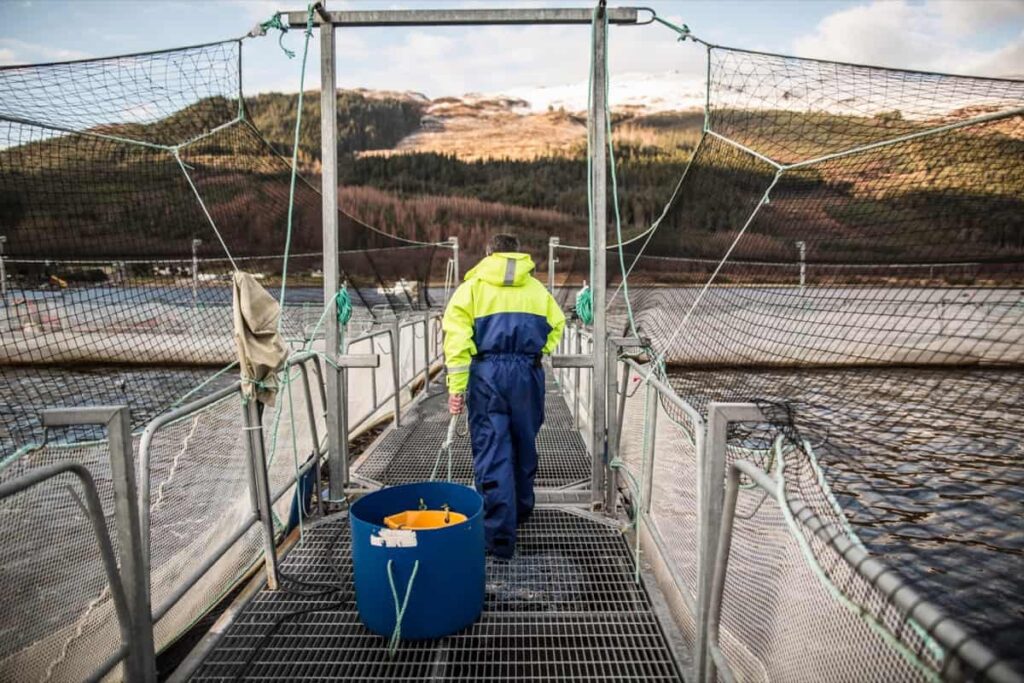
By implementing efficient farm management practices and utilizing modern technologies, farmers can reduce operational costs while maximizing output. Additionally, Thai government support plays a crucial role in ensuring profitability within the industry. Various financial incentives and subsidies are available to assist new entrants or existing farmers looking to expand their operations. These initiatives help offset initial setup costs and provide ongoing support throughout the business journey.
Conclusion
Thailand has a long history of fish farming. Today, it is one of the leading countries in aquaculture production globally. The country’s favorable climate and abundant water resources make it an ideal location for starting fish farming. Fish farming in Thailand has become a vital industry contributing to domestic consumption and export markets. With its extensive coastline and abundant freshwater resources, this tropical paradise provides an ideal setting for cultivating a wide range of fish species.
- Sheep Farming Business Plan for Beginners
- Aquaponic Farming at Home: A Step-By-Step Guide
- Profitable Village Farming Business Ideas in 2024
- High-Yield Aquaculture: Fast-Growing Fish for Farming
- Effective Fish Pond Construction Techniques for Beginners
- Irrigation and Water Management in Pineapple Farming
- Blossom to Harvest: Mastering Flowering and Pollination in Papaya Farming
- Pig Fattening Essentials: From Selection to Sale for Beginners
- Raising Wagyu Cattle: A Complete Guide for Premium Beef Production
- Soil Types and Their Water Holding Capacity
- Optimizing Irrigation Schedules for Coconut Groves for Enhanced Yield
- Espresso Your Garden: Coffee Grounds for Healthier Acid-Loving Plants
- The Best Soil Mix for Snake Plants: How to Mix Your Own Snake Plant Soil
- Green Thumb Success: Expert Tips for Cultivating Greenhouse Beans All Year Round
- Bloom All Year Round: The Ultimate Guide to Indoor Hyacinth Care
- Eco-Friendly Gardening: How to Make Liquid Fertilizer from Kitchen Waste
- Ultimate Guide to Grow Anise in Pots: Explore Seed Propagation to Harvesting
- Guide to Raising Chester White Pigs: Discover Breed Facts to Growth Management
- Mastering the Elegance: The Ultimate Guide to Weeping Cherry Tree Care, Planting, and Maintenance
- Ultimate Guide to Planting Garlic in Grow Bags: Growing Strategies for Beginners
- How to Fix Spider Plant Leaf-Related Problems: Natural and Organic Remedies
- 10 Reasons Why Your Tulsi Plant is Shedding Leaves: Home Remedies and Solutions
- Optimizing Growth and Yield: The Advantages of Palm Bunch Ash Fertilizer
- Utilizing Neem Oil Extract as a Natural Pesticide for Hydrangea
- From Soil to Harvest: Various Ways in Which Farmers Can Use AI Tools
- Steps to Encourage and Induce Citrus Flowers: A Comprehensive Guide
- How to Fix Snake Plant Leaf-Related Issues: Natural and Organic Remedies
- Transform Your Garden into a Fragrant Oasis with Raat Ki Rani (Night Blooming Jasmine)
- Discover the Ideal Chicken Breeds for Philippine Farms
- How to Create a Poultry Egg Farm Business Plan for Profits
- Grow Lemon Cucumbers Like a Pro: Insider Techniques for Bountiful Yields
- Ultimate Guide to Caring for Your Pink Princess Philodendron: Tips for Thriving Variegation
- Areca Nut Profit Per Acre: Calculating Yield and Cost of Cultivation
- How Kaveri Chicken is Becoming a More Profitable Breed in Indian Backyards
- Transform Your Barn: 9 Steps to Convert a Horse Stall into a Chicken Coop
- Exploring Suffolk Sheep Disadvantages with Limitations and Challenges
